Oops
For a Better use of this website we recommend to use a pc or a tablet.
Exploring the role of science online beneath the surface
When looking at the role of science in online engagement around the 2019 Amazon rainforest fires, we can see multiple ways in which science and scientific perspectives were mobilised. For example, it is possible to observe specific scientific voices receiving a significant amount of visibility on social media and media articles.
Yet, in many instances especially on social media, scientific voices were almost absent, marginal, present at the periphery or only after the “peak”.
This issue story exposes which scientific voices emerged online and how, to depict the role science played in online engagement around the Amazon rainforest fires.

Some scientists became the main sources and reference points in social media debates and journalistic articles, while many others did not. Conversation between scientists also took place but received low visibility and engagement, as many of them did not use the hashtags including those related to the Amazon fires.
1 — Absence and marginalisation of science on Twitter
📉 — Top hashtags overtime, resized by number of tweets. Green represents some of the top hashtags with a high number of tweets, while red indicates science-related hashtags with lower number of tweets.
Science-related hashtags seldom make it to the top
The top hashtags during the peak of the event were mostly calls for action (#prayforamazonia, #actfortheamazon, #savetheamazon), followed by Brazilian political perspectives. This is perhaps unsurprising given that many of the hashtags representing calls for action were used as keywords for building our tweet corpus.
Only a handful science-related hashtags (i.e. #sciencematters, #sentinel2, #nasa, #unitebehindthescience) emerged in the top 100 hashtags.
These science-related hashtags were supporting the role of science and/or referring to the Earth observation programme.

📉 — Top hashtags overtime, resized by number of tweets (lower section)
#sentinel2 (329 tweets): the majority of tweets referred to this tweet by @CopernicusEU, the EU Earth Observation Programme. It called for more attention to the fires in Africa which were happening simultaneously. Notably, #africafires emerged in the top hashtags in the peak period of the Amazon rainforest fires.
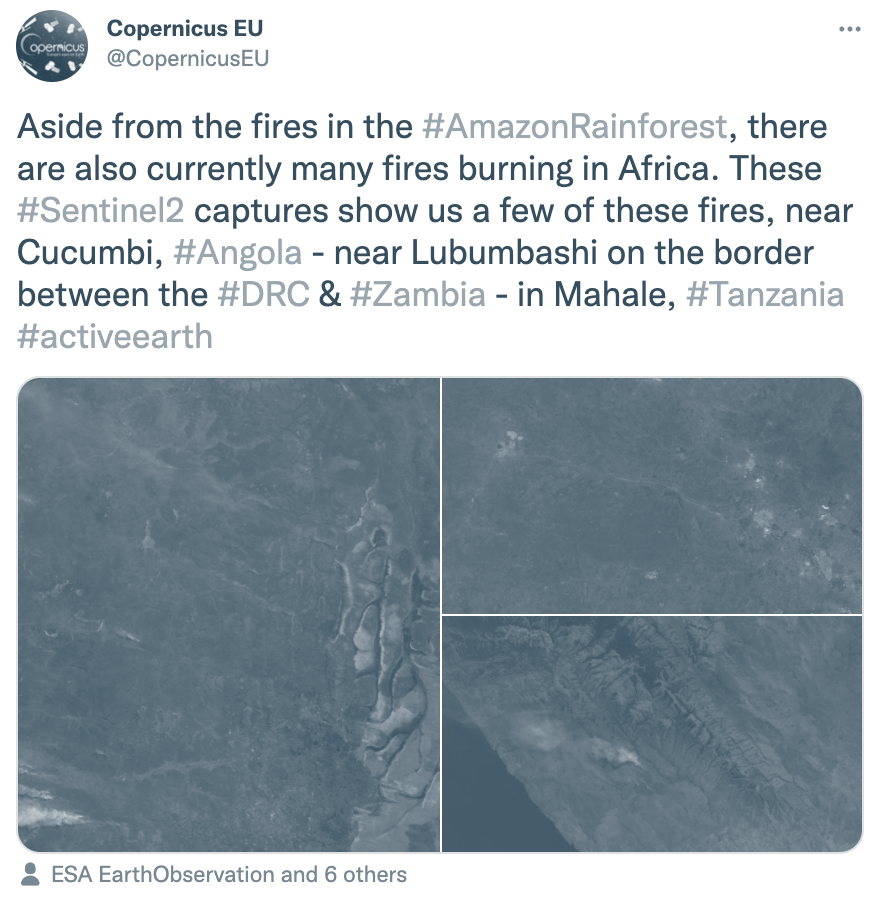
#nasa (323 tweets): Top tweets with this hashtag referred to NASA’s scientist Douglas Morton, with his interview on Russia Today in Spanish. Another tweet was an endorsement for Douglas Morton by another academic.
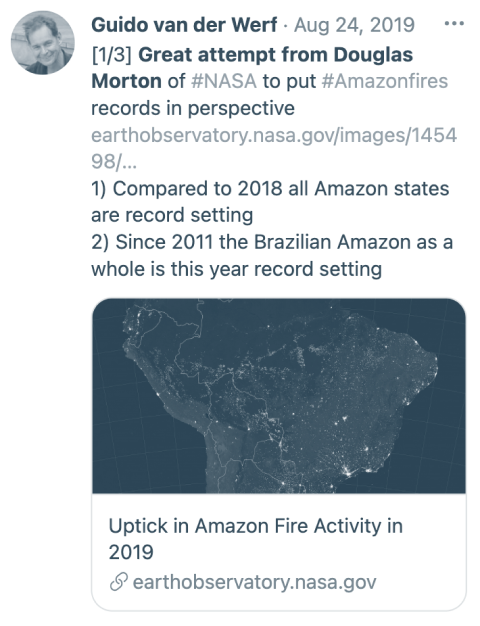
#unitedbehindscience (215 tweets): The majority of tweets quoted the tweet by @borisherrmann, a German offshore sailor and skipper of Team Malizia (a zero-carbon boat on which Greta Thunberg was sailing to New York at the time). He tweeted a GIF of a live map with the hashtag #amazonfires. The hashtag #malizia also appeared on the top hashtag list.
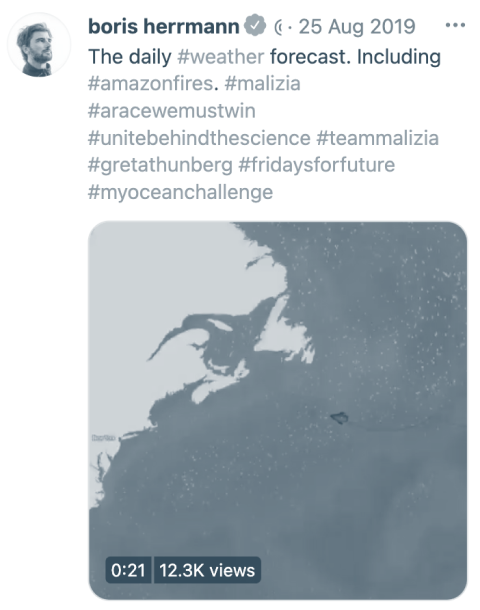
#sciencematters (217 tweets): the majority of tweets with this hashtag promoted a tweet by @DrGJackBrown, a physician who has frequently appeared on CNN.

Scientific voices emerge at the top only after the spike
📉 — Top 10 tweets per day for number of retweets
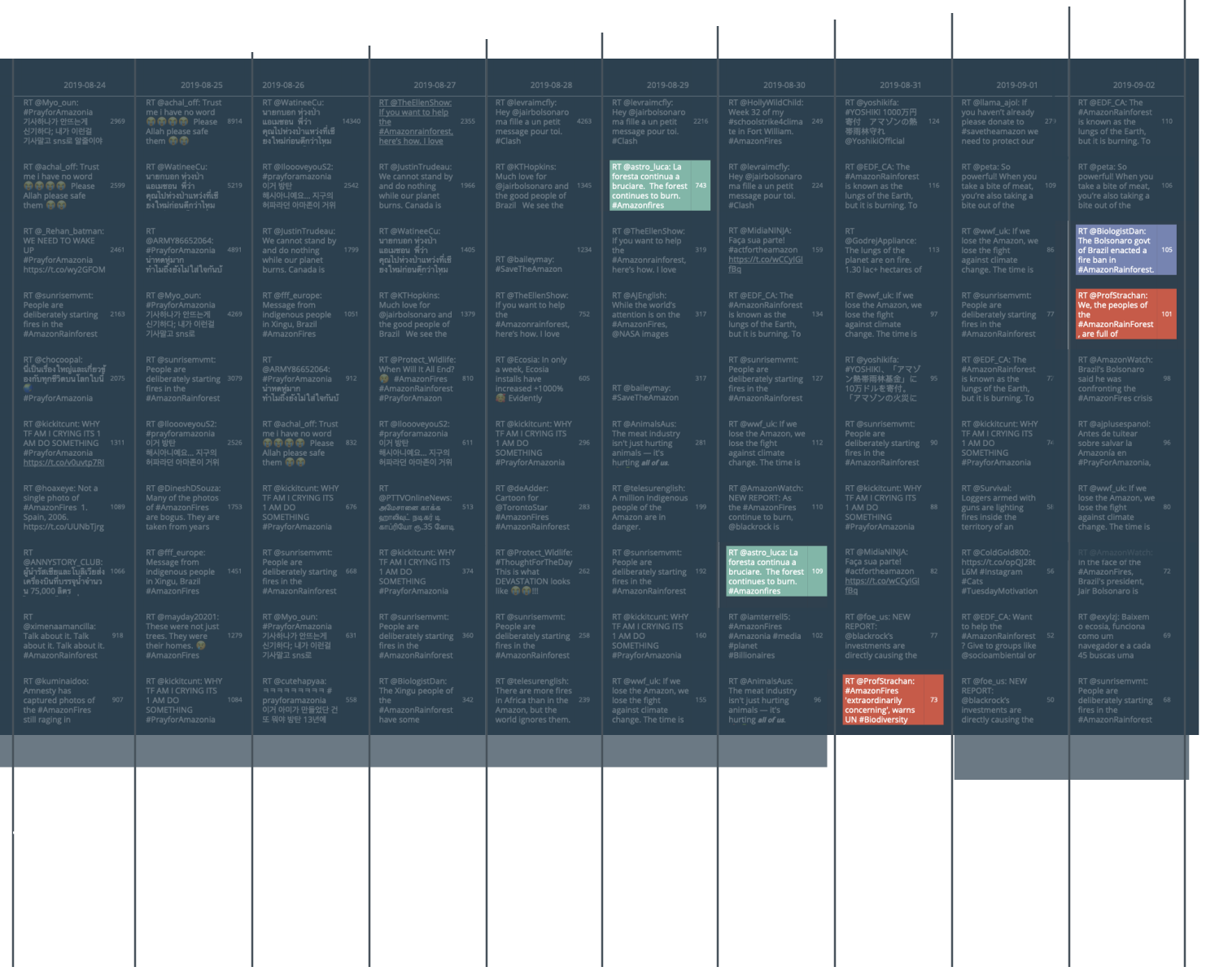
📉 — Total amount of tweets in the selected time frame
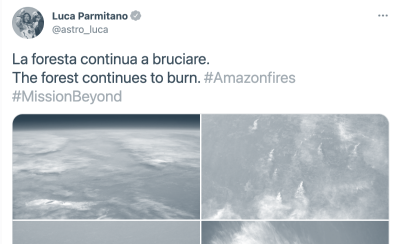
A tweet by Luca Parmitano (@astro_luca), an Italian astronaut of the European Space Agency, emerged on the top retweet list on 29-30 August 2019, receiving more than 850 retweets. His tweet included aerial images of the Amazon fires.

A tweet by @ProfStrachan, the most active and influential account based on the number of tweets and mentions over the 10-day period, appeared at the top once the peak started to cease. One of his tweets referred to a Guardian article featuring the executive secretary of the UN convention on biological diversity.
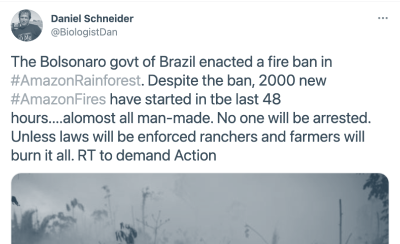
Another tweet from a science-related account that appeared after the peak period was from @BiologistDan, an account claiming to be a biologist. The tweet points out the link between cattle farming and the fires.
Scientific accounts were often peripheral in Twitter activity associated with the Amazon fires
Twitter activity does not necessarily succeed in bringing different kinds of actors into sustained new engagements with each other. In particular, scientists and researchers were not only the least visible, but also not engaged with other clusters of actors.
While most scientific actors did not come into contact with other most mentioned accounts, @profstrachan, an account representing an academic specialised in energy policy and environmental management was frequently mentioned in our corpus.

Far from the centre, there are a few scientist names, namely @Erika_Berenguer, a tropical forest ecologist at the University of Oxford and @AnaPDAguiar, a researcher at the Stockholm Resilience Centre specialised in land use models and scenarios. Further to the right, @nasajpl (NASA Jet Propulsion Laboratory) along with @Space_Station (the International Space Station), @copernicuseu and @copernicusems (the EU Earth Observation Programme) can be observed.
@AnaPDAguiar, a researcher closely positioned to @Erika_Berenguer, tweeted with scientific insights on the increase in the number of fires in the Amazon. It stated that the increase of fires in 2019 has taken place in the period after the deforestation control actions have been put in place. It points out a simple comparison without context can lead to a wrong conclusion.

@Erika_Berenguer was one of the few scientists to surface in our data collections. With a background in tropical forest ecology, the researcher is currently with Oxford University and Lancaster. The top tweet mentioning her account directed to a tweet with a video of a BBC Newsnight interview.

Scientific actors were mostly peripheral, but a single researcher account found a way to become influential.
@profstrachan has also appeared as the single most active scientific account among the top 20 users who posted the highest numbers of tweets.
This account is also the most “influential” user in this set, receiving the highest number of mentions and more than any other of the top accounts.

2 — The role of science in media articles promoted on Twitter with misleading claims
Media treats scientific voices as the key sources when debunking
📉 — Most prominent sources in media articles promoted with a misleading claim on Twitter, resized by number of mention
Out of 23 freely accessible, English-language media articles circulated with the misleading claim “20% of the world’s oxygen is produced in the Amazon” on Twitter, there were 6 articles which debunked the claim. These articles were published by Forbes, National Geographic, BBC, Science News, Atlantic and Asiaville News.
When compared to stories which treated the misleading claim as (potentially) correct, they had the tendency to refer to scientific sources more than the articles taking different positions.
Some scientists got it wrong and (yet) received media’s attention
Scientists, including those who are not specialised in the Amazon rainforest or associated areas of research, have gotten it wrong. In our sample of 23 articles, two scientific sources referred to the misleading claim without critical caveats.
These claims have circulated amongst journalists as well as researchers who work in different research areas. As two scientific sources who promoted the claim were not specialised in the subject matter, they may have been engaging with the event in their capacity as concerned citizens. These examples point out some of the challenges both researchers and journalists face in relation to classifying and interpreting social media users.
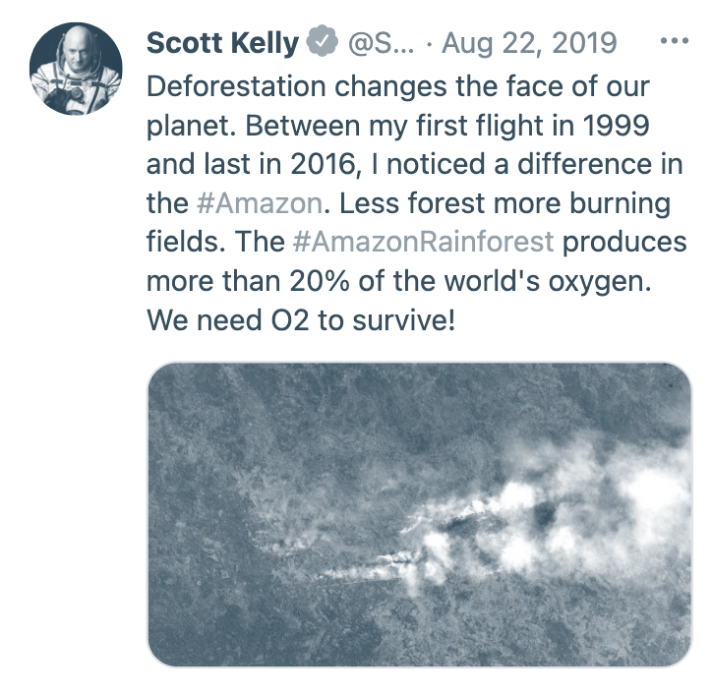
Classifying account types is not always just a matter of professional background, but also the capacity in which a user is posting which is not always clear. With highly mediatised environmental events such as the Amazon rainforest fires posts may blur lines between personal and professional perspectives.
Some scientists received significantly more visibility than other sources




Several scientists and researchers appeared multiple times in our sample. In some cases, they were treated as the main source of information. For example, the Forbes debunking article allocated more than half of the total source references to Daniel Nepstad, a forest ecology scientist and the executive director of the Earth Innovation Institute. All references made to Nepstad are highlighted in yellow.
Based on the Crowdtangle data, this article received the highest volume of social media engagement compared to any other articles in our samples, with 317,000+ shares, comments and reactions on Facebook.
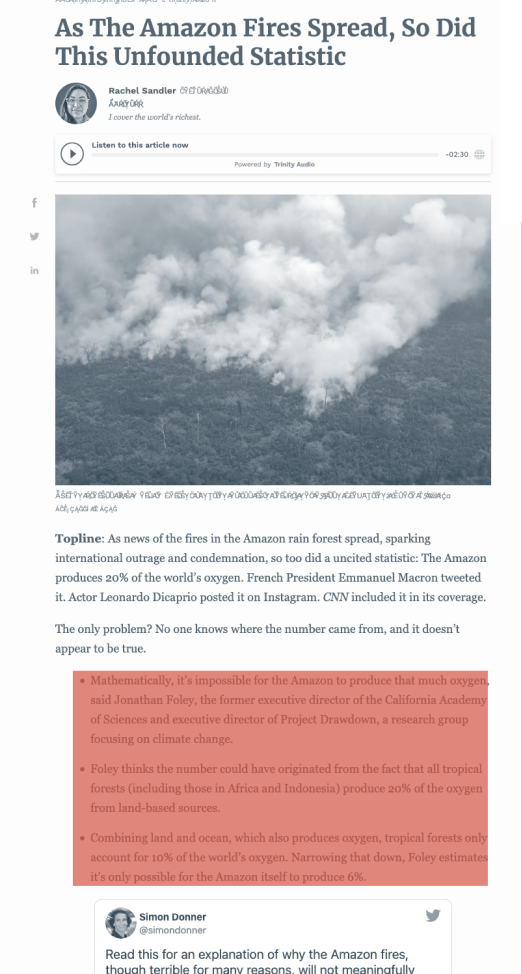

Another Forbes article dedicated more than half of the total source references to Jonathan Foley , a climate and environmental scientist and the executive director of Project Drawdown
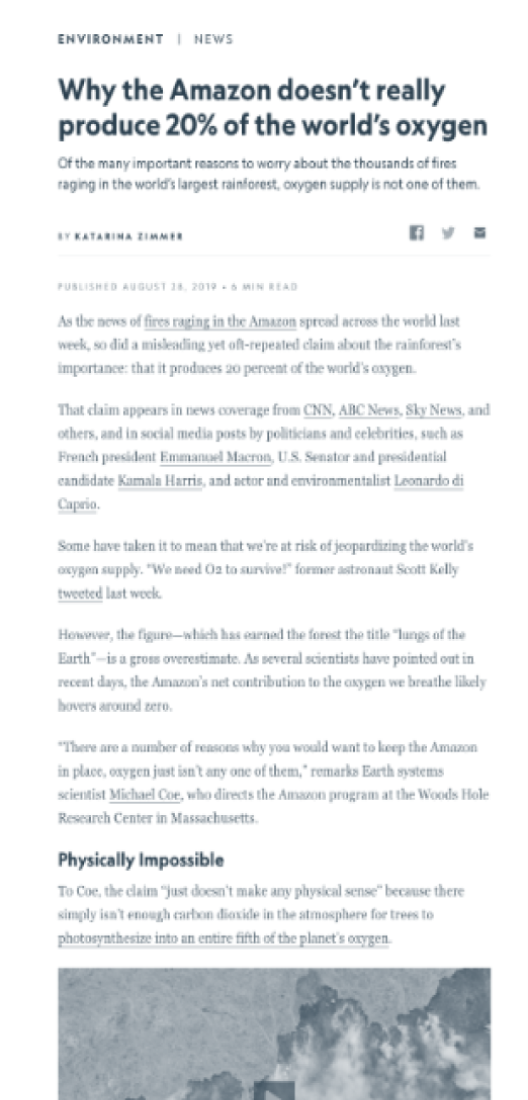
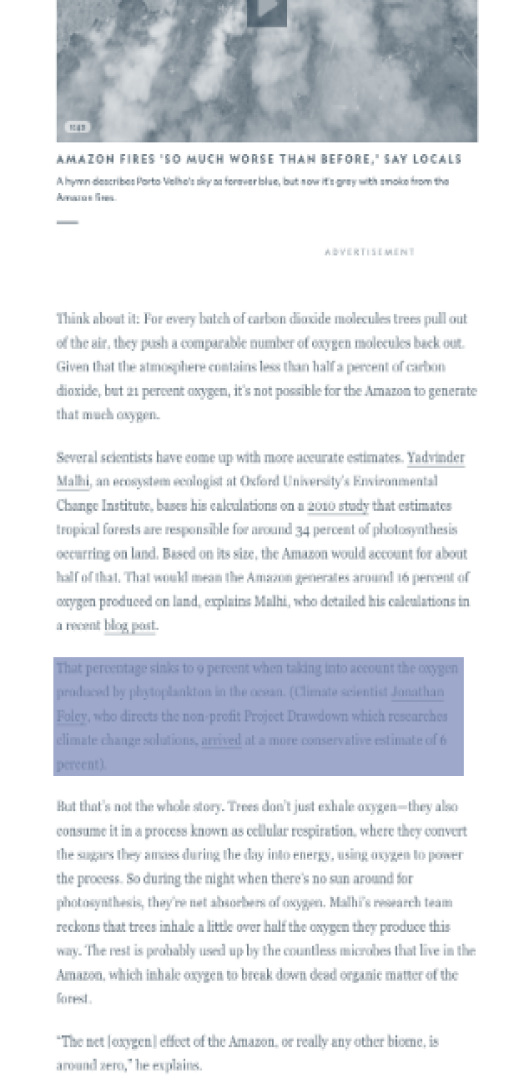

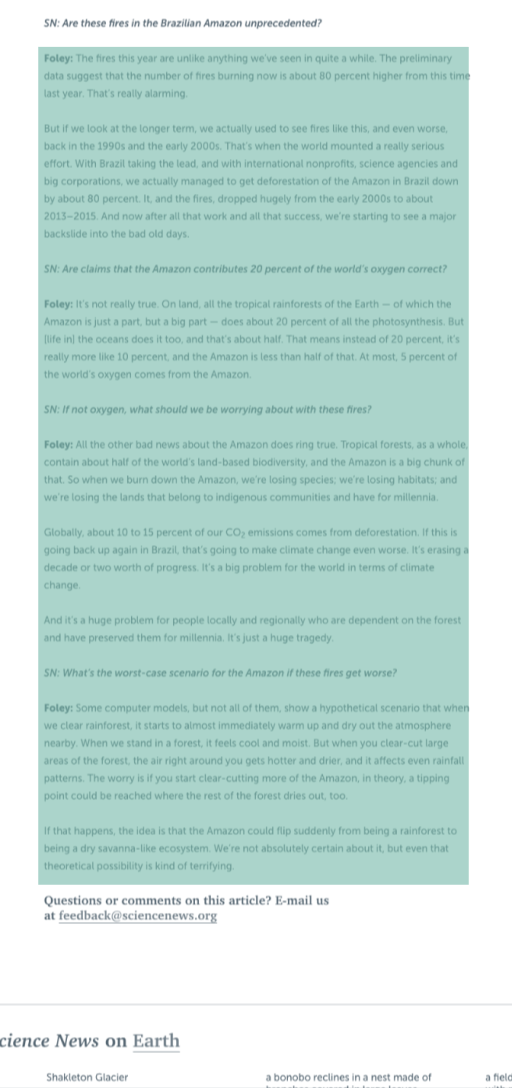
Foley appeared in two other articles, including a debunking piece published on National Geographic. The story referred to him as one of the scientists to criticise the misleading 20% oxygen claim, and included the link to his tweet.
Foley also appeared in Science News, another article which debunked the same misleading claim, as the main interviewee to respond to the questions about the impacts of the Amazon fires.
